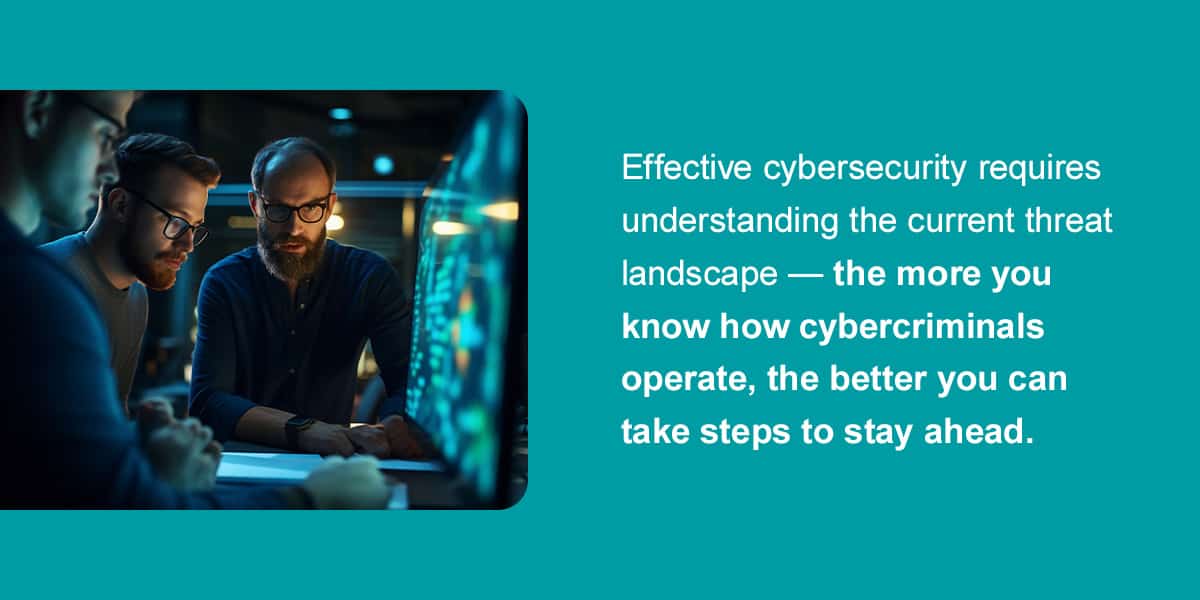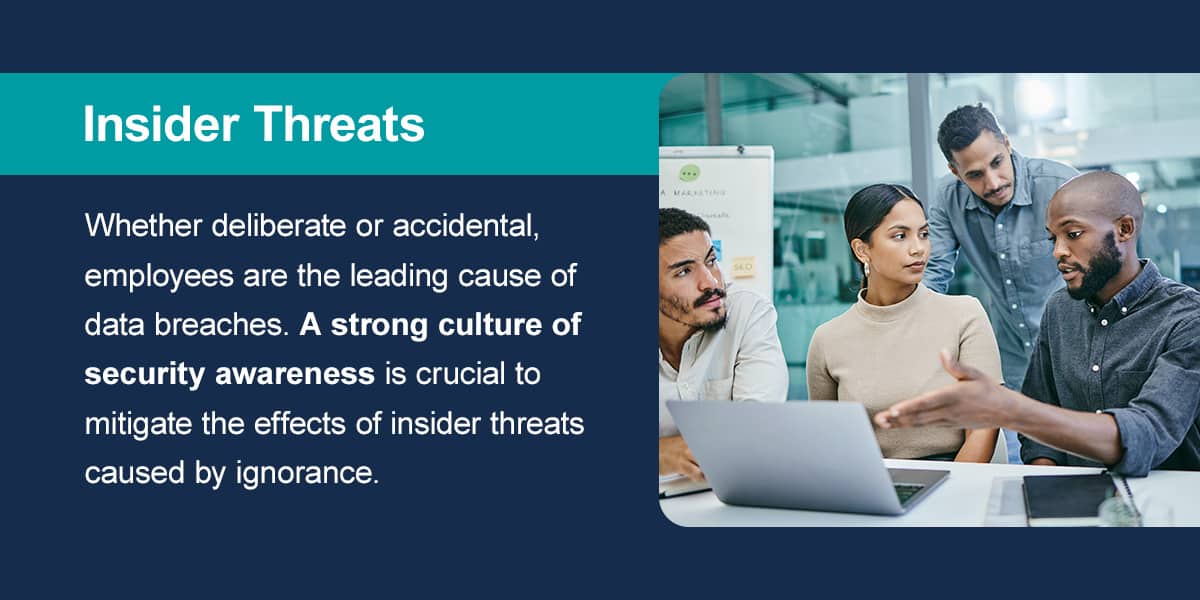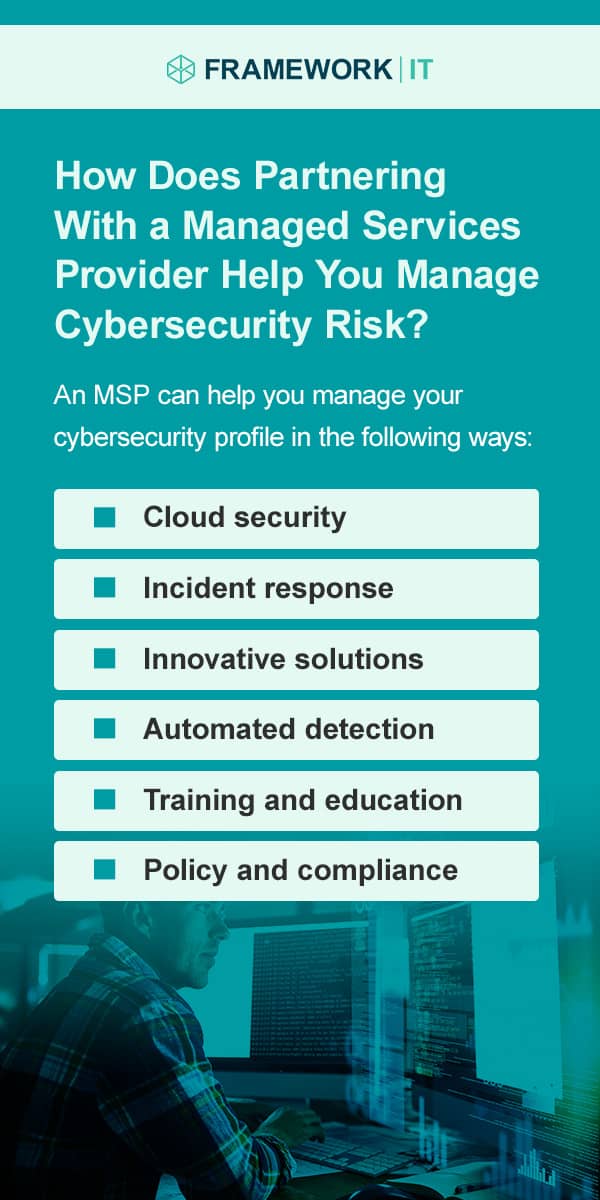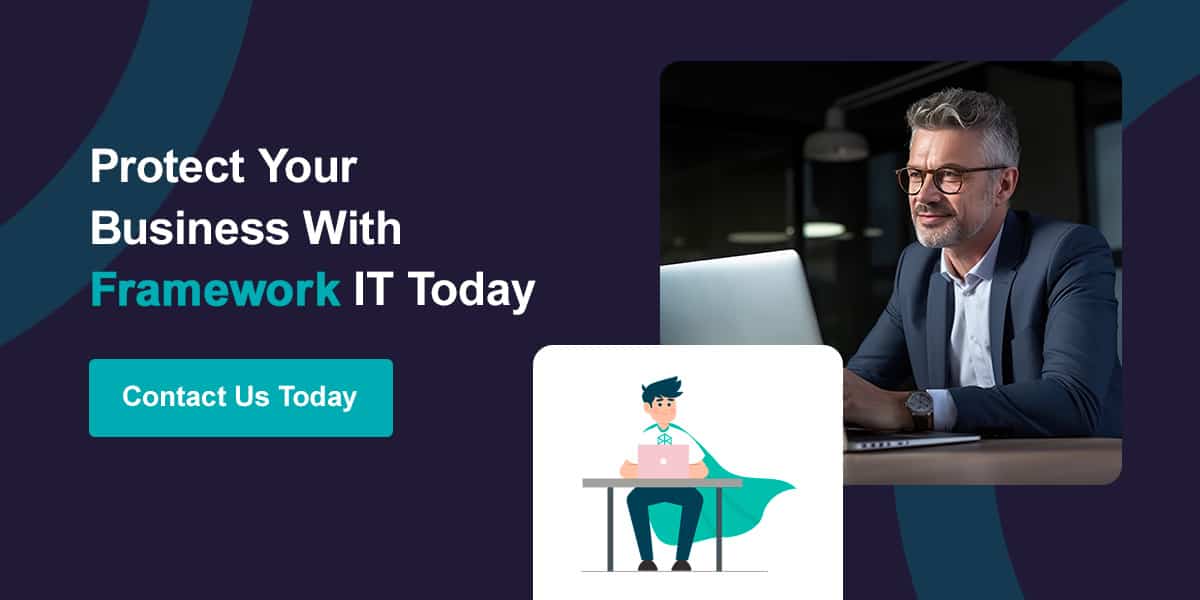Protecting Your Small Business: The Biggest Cybersecurity Threats and How Managed IT Services Can Help
Small businesses rely heavily on technology to drive growth and profitability, but this dependence has made them vulnerable to cybercriminals. Cyber threats don’t discriminate — 43% of cyberattacks are aimed at small businesses. A robust cybersecurity strategy is essential to prevent breaches and data loss.
A proactive approach to cyber threats to small businesses is critical. Knowing about common cybersecurity risks is the first step to developing a comprehensive strategy.
Why Is Small Business Cybersecurity Important?
Cybersecurity should be a priority for businesses of all sizes. A data breach has an average cost of $5.56 million for companies with 10,000 to 20,000 employees. While it may seem cybercriminals target larger and more lucrative operations, small businesses are still attractive and often need more resources for a robust cybersecurity profile. Many small-to-medium enterprises (SMEs) are ill-prepared, and 43% have no official cybersecurity plan.
A cyber incident can devastate any business, with severe financial and reputational implications. Having robust cybersecurity can give you confidence in your organization’s ability to operate in the digital landscape. Cybersecurity is crucial for the following reasons:
- Data protection: Cybercriminals often target sensitive information like customer financial records and intellectual property. Protecting your data is essential to maintain customer trust.
- Continued operations: A robust cybersecurity strategy helps you maintain operations.
- Compliance: Investing in cybersecurity can assist in maintaining compliance with industry-specific regulations, avoiding fines and penalties.
- Reputation: Cybersecurity matters to all stakeholders. A strong cybersecurity strategy gives your stakeholders peace of mind and elevates your reputation.
Types of Cyberattacks and How to Prevent Them
Effective cybersecurity requires understanding the current threat landscape — the more you know how cybercriminals operate, the better you can take steps to stay ahead. Cybercriminals are constantly innovating, but some common cybersecurity risks include:
1. Phishing Attacks
Phishing attacks remain one of the most prevalent and successful tactics cybercriminals employ to infiltrate small business systems. It’s one of the most reported cybercrimes in the U.S. This method involves mimicking an email or text message — known as smishing — from a trusted source and encouraging the recipient to click on a link or provide sensitive personal information. Phishing attempts are challenging to fight, as they often target specific people in your organization.
Businesses can adopt various measures to combat this threat, implementing robust anti-phishing solutions like spam blockers and filters. Training and education are necessary to prevent phishing and smishing attempts. Conducting regular training sessions educates employees on identifying and avoiding phishing scams. By taking these proactive steps, small businesses can significantly reduce their susceptibility to phishing attacks and safeguard their valuable assets against cyber criminals.
2. Malware
Malware is malicious software that can infect small business systems and cause significant damage. It’s a concern for many businesses, with 40% of security leaders citing malware as a threat focus. It’s often delivered via phishing emails, encouraging users to click on a link. When they do, they release malicious software throughout your organization’s network, attacking files or gathering sensitive information. This attack is particularly damaging to SMEs, and many attached viruses target expensive devices.
Next-generation anti-malware software, which leverages machine learning and is designed to detect and prevent more advanced threats before they can do any harm, can save your business in the long run. Phishing and malware often work together — 91% of cyberattacks start with phishing emails, so cybersecurity training is crucial to combat malware installation attempts.
3. Ransomware
Ransomware is a malicious application that encrypts files on a small business’s system and holds them for ransom. It locks you and your employees out of your system and takes control of your data. The cybercriminals then promise to release your sensitive information once you pay them. This breach is often spread through email or network attacks, and SMEs can make lucrative targets. They’re more likely to pay the ransom if they lack the resources for data backup.
Organizations can implement ransomware protection and backup solutions to mitigate the impact of ransomware attacks, such as endpoint protection and effective cloud backup. Keeping your security systems current is also essential, as hackers exploit weaknesses in older systems. A robust cybersecurity incident response plan is critical to mitigate the effects of a ransomware attack.
4. Insider Threats
Whether deliberate or accidental, employees are the leading cause of data breaches. Insider threats can stem from employees, former employees, associates, or business contacts. As these people have access to your data, they can facilitate data breaches in error or with malicious intent.
A strong culture of security awareness is crucial to mitigate the effects of insider threats caused by ignorance. Access controls and monitoring solutions limit employee access to sensitive data and allow data access on a “need-to-know” basis. You can also monitor network activity for suspicious behavior to minimize the risks of insider threats.
5. Password Hacking
Most of our access to sensitive data relies on passwords, making password theft and hacking a significant risk for businesses of all sizes. As 53% of people use the same password for all their accounts, a hacker can access much of your data if they crack one password. Weak passwords are easier to break, and training employees to strengthen their passwords and manage access can reduce the risk of password hacking.
Multifactor authentication effectively limits password hacking, as it grants access based on more than a password. Instead, users must take multiple steps, like using their mobile device or fingerprint, to gain access.
6. Social Engineering
Cybercriminals know the most effective way to access your data is to leverage the human element. Social engineering involves gaining their victim’s trust through fictitious social media profiles and personas. Establishing relationships with their targets opens the door to phishing attempts and makes it easier for them to install malware.
User education is the first step to combat social engineering attempts, along with robust network security and consistent monitoring to detect and handle social engineering attempts.
How Does Partnering With a Managed Services Provider Help You Manage Cybersecurity Risk?
Cybersecurity is a significant concern — more organizations outsource their cybersecurity to professionals like managed services providers (MSPs). Partnering with a managed IT services provider can help small and mid-sized businesses protect themselves against cybersecurity threats. From anti-phishing and anti-malware solutions to cloud security and access controls, managed IT service providers can help small and mid-sized companies stay protected against the latest cybersecurity threats.
An MSP can help you manage your cybersecurity profile in the following ways:
- Cloud security: Cloud-based services are becoming popular among small businesses. As new cybersecurity risks emerge, SMBs secure their data by partnering with a managed IT services provider that offers cloud security solutions, such as encrypting data in transit and at rest, restricting access to cloud resources, and monitoring cloud activity for potential threats.
- Incident response: Responding to a cybersecurity event quickly can limit the damage and maintain operations. An MSP can help you create and manage your incident response using the latest technologies so you can respond proactively to any breach attempts.
- Innovative solutions: Cybercriminals are always innovating and finding new ways to access sensitive information. MSPs have access to the latest threat intelligence and cybersecurity technologies, keeping you ahead of malicious attacks.
- Automated detection: Automated tools are an excellent method of catching cybercriminals in the early stages. Your MSP can automate vulnerability scans across your organization, install patches, and keep your security up-to-date.
- Training and education: Educating employees is your first line of defense against cybercriminals, and many MSPs can provide security awareness training and mock phishing campaigns to help your team identify attempts to access your data.
- Policy and compliance: An MSP can assist in creating a detailed cybersecurity policy and navigate complex regulatory requirements to ensure compliance.
Protect Your Business With Framework IT Today
Cybersecurity is a critical concern for all businesses, and the right approach to combatting cyber threats can mean the difference between a success and an expensive lesson. Framework IT can help you boost your cybersecurity profile with a multifaceted, proactive approach. We start with minimum security measures and offer a range of cybersecurity services to protect your data, train your team, and react in the event of a breach.
Not all IT companies are created equal. At Framework IT, we help technology move your business forward with confidence. Break the cycle of reactive IT. Get in touch with our experts today to learn more.






